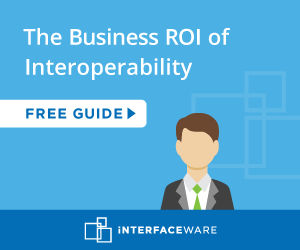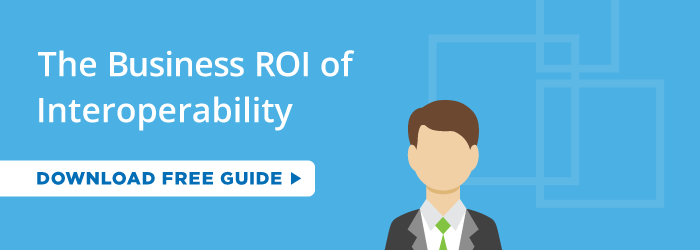In case you haven’t noticed, I’ve been writing a lot recently about FHIR. It’s a topic near-and-dear to my heart because it’s a genuine attempt to improve the landscape of healthcare, specifically interoperable healthcare, through a common-sense solution.
FHIR – along with the promotion of the HL7 organization – is helping make the paradigm of RESTful API-based integration a mainstream concept within the hospital IT application market and I couldn’t be more excited.
By changing the way we in healthcare integrate, there is a real opportunity to not only improve the quality of care, but to also improve the health (and profitability) of many organizations.
Think about how implementing a typical electronic health record (EHR) product works in today’s hospital market.
- A hospital selects a new EHR product and everyone is very excited.
- The actual implementation process however is very complex.
- The hospital begins to moan about how much money it costs and how long it takes.
- The vendor struggles to marry the implementation demands with their needs to continue improving and selling their product.
- Most of the money paid to the vendor is eaten up paying the salaries of the people doing the time-consuming integration.

The end result is that although large amounts of money have changed hands, the EHR vendors often aren’t that profitable. In fact, many lose money on the initial implementation. This leads to some vendors trying to “nickel and dime” on everything afterwards in order to recover their initial investment.
No one is happy under this model.
With RESTful APIs however, the model can change. An EHR vendor that makes their system open with simple APIs can then partner with system integrators – people like Xerox, HICG or even just talented individuals – who specialize in the integration piece so they can scale up the capacity to implement projects easily without risk. If things slow down the vendor is not left high and dry paying the salaries of idle staff.
It’s a different business model – the EHR vendor doesn’t bring in quite as much revenue – but they:
- Become much more profitable with far less risk.
- Become a smaller, but much higher margin business making more money on pure software sales.
- Can expand and grab market share much faster than they could have if they had to scale up their own services organization.
- Don’t have all the corresponding headaches, which in turn allows them to focus more on their core R&D and making a good product.
Incidentally, this happens to be exactly our model – and it’s highly profitable.
The same methodology can also be implemented by just about any major healthcare organization to fix their internal integration woes. They can put simple APIs on every internal product and suddenly, without even using external integration partners, it would become a whole lot simpler to get things to work together. This isn’t an original concept by the way – it’s exactly what Jeff Bezos did at Amazon. It’s just a novel concept for healthcare, since we seem to prefer to spend our time with SOAP and other great ideas.
For my company of course, it’s a great opportunity since nothing comes remotely close to Iguana in the healthcare integration engine market for being suited for this style of integration. It’s a no brainer to advocate for FHIR and RESTful APIs for integration in general. It’s the approach I have been promoting for our customers long before my infamous ‘Rise and Fall of HL7‘ article.
Prior to FHIR it was a tough sell explaining to a CTO why they should base their integration strategy on RESTful APIs. All too often technology leaders in healthcare would think it made sense to make their products conform to the IHE HL7 profiles. Having the HL7 organization promoting FHIR – given a bit of encouragement in the right direction – educates the whole market in the direction of using RESTful APIs.
With good RESTful APIs + IGUANA it’s straightforward to generate and consume any data – whether it’s a CDA document (well still a fair bit of work there), V2 or other.
All of this is very good for us. But it’s also good for the wider industry and good for healthcare as a whole. There is nothing not to love here.
A message to every gnome out there – Iguana + FHIR = Profit!

